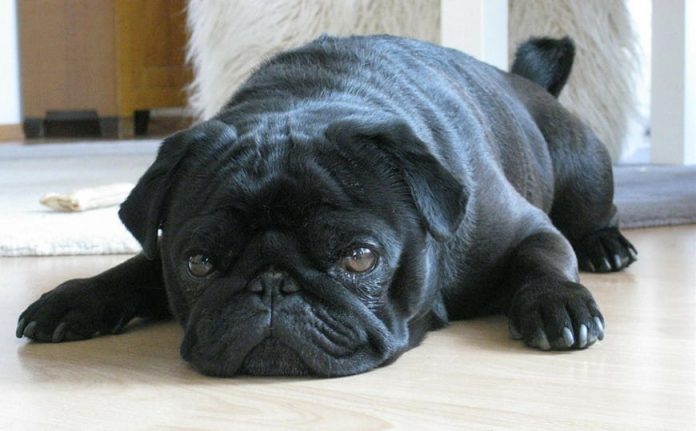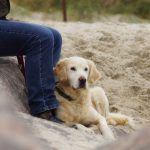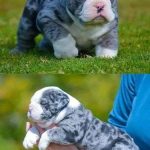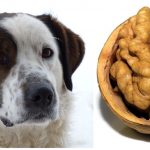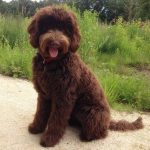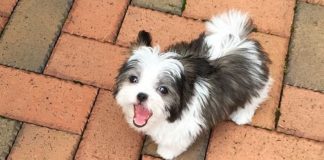Blue pugs are extremely rare. Pugs have a pair of color genes that is responsible for the final color of the dogs. Both parents will pass their color genes to the pups, meaning that the pups are born with unique color genes. If a pup inherits 1 fawn and 1 black color gene, the pup would be black because the black color is a dominant gene while fawn is actually a recessive gene. This means that a fawn pug has 2 fawn color genes.
Black pugs, on the other hand, come in 2 genetic variations. The True/Dominant black is also called blue-black because their coat looks dark blue-black in sunlight and has 2 black color genes. The Hybrid black is also called a rusty black and has 1 fawn gene and 1 black gene. The color of their hair can look rusty or brown in sunlight. If you have decided to get a blue pug, here’s what you need to know in order to keep them healthy and well-behaved.
Blue Pug Training
They respond well to positive reinforcement. Give your pet praises and rewards when he does something good. It is best to start training them from a young age. This way, you can develop a close bond with them. Training them early will also teach them how to interact with other people and pets.
Pug puppies can learn fast. A 15-minute training session twice a day will be enough. You can increase the duration of the training session as the pet grows older. Seeking professional help is also beneficial. Find a professional and skilled dog trainer. Just make sure that you’re comfortable with his training style.
Meet the trainer in person before enrolling your pug in a group training class, so you can discuss your dog’s needs. Training classes can also help your pooch socialize with other dogs.
Grooming for Blue Pugs
Brush their coat one or two times a week. You can use a specialty shedding or slicker brush. Brushing their coat on a regular basis will limit their shedding.
Their facial folds should be cleaned every week. This is because their facial folds can store dirt, saliva and food that can irritate their skin. Dip a cotton swab in warm water and run it along their facial folds. The swab shouldn’t touch their mouth, eyes or nostrils. Dry the folds with a clean cotton swab or towel.
You can do this once a week, but you can clean their folds as often as needed if your pug is beginning to smell. It is also important to clean their ears once a week. Their ears can trap debris and dirt, so you should clean them on a regular basis with an ear cleaning solution made for dogs.
Squirt their ears with a cleaning solution and use a clean cotton ball to wipe them inside down. Don’t push the cleaning tool into their ear canal because this could damage their ears.
Blue pugs can be bathed once a month, but you can give them a bath as needed if they are smelly or dirty. The bath water should be shallow enough for them to stand. Don’t use shampoo for humans as it contains chemicals that can harm their skin. Instead, use a dog shampoo and rinse them thoroughly. Don’t forget to cover their eyes while rinsing them.
Their nails should be trimmed as needed. You can take your pooch to the vet or a professional groomer. If you want to do it on your own, use clippers designed for dogs to prevent splitting and cracking their nails.
Blue Pug Feeding
Just like the other color variations of this breed, blue pugs can gain weight easily. That is why you should monitor their diet properly. Feed your pooch once or two times a day according to the serving size recommendation of the manufacturer.
The food label shows the maximum amount your dog should eat every day. If you have to feed your blue pug two times a day, you can divide the serving in half.
To determine if your dog is overweight, you should feel for his ribs. If his ribs are hard to feel, he might be overweight. His ribs should be felt easily, but not seen. His diet should be appropriate for his age. In case you have a blue pug puppy, give him puppy food.
Adult pugs should be given an adult diet. Dogs with medical issues have to follow a specialized diet. Talk to your vet about the kind of diet that your blue pug should follow. You should also limit treats. The excess weight could exacerbate or cause joint and respiratory problems.
Blue pugs, in particular, are prone to respiratory problems due to their flat face. Give them small treats for 1 or 2 good behaviors but don’t give them extra treats outside of training sessions.
How to Keep a Blue Pug Active
Blue pugs should not be over exercised. They find it hard to cool down when playing and running due to their flat nose. One or two moderate walks and playtime will be enough for them. You can play chase, fetch or tug-of-war in your backyard or inside the house.
Healthy adult blue pugs should get 15 to 20 minutes of walk every day. They will also benefit from short playtime with toys. Don’t take them outside when it is hot because they might suffer from heat stroke.
Get them a coat during the colder months but keep in mind that walks should be avoided on rainy and windy days because they might develop eye problems.






